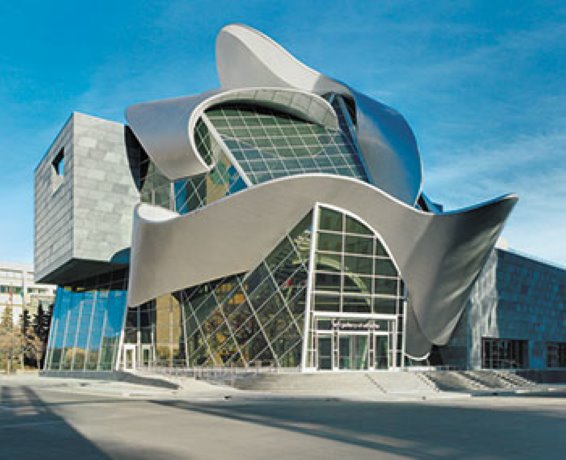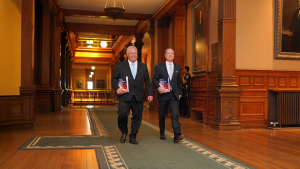Building Information Modeling (BIM) is about to get a lot more interesting, if Klaas Rodenberg has anything to say about it.
Rodenberg, CEO of the Alberta Centre of Excellence for Building Information Modeling (aceBIM) is presenting the seminar The Future of BIM in Alberta, at Buildex Calgary this year.
When he looks into the future of BIM in Alberta he sees integration as being key.
Making modeling technology more available will make it easier for people to visualize what BIM is about and lower barriers at the same time.
“We’re also looking at building a BIM Cave, that’s a fancy name for a number of projectors that allow you to take the 3D model you see on your screen and project it in real scale,” he said.
“That way, you can physically walk through it and look at different things. You can bring owners, contractors, architects in the room and they can work together to resolve problems with that.”
He compared it to a well-known sci-fi technology.
“It’s kind of like the holodeck except it’s not solid,” he says.
In his seminar, Rodenberg will touch on some of the projects aceBIM is working on, including ways to integrate into the industry.
“We’re looking at developing something we’re calling the Alberta BIM Cloud, the ability for people to be able to access the technology through the cloud and not have the huge investment to get into it by building their own IT infrastructure,” he said.
Building BIM awareness and integration in the Alberta construction industry is a process, according to Rodenberg.
“The more people we get into the industry, the more benefits we’re going to reap,” he said.
“The benefits are going to come from not having to re-do things over and over again, to better co-ordinate.”
Rodenberg said there are a number of smaller and mid-sized companies in Alberta, who could benefit from BIM technology, but don’t have the means to get involved.
“They’re trying to decide, ‘How do I become part of that industry and how important is it for me to be part of it?’” he said.
“There are a lot of successful companies in Alberta, who are doing quite well in this economy and there’s no real impetus for them to change to a BIM technology or a more complex technology because they’re doing very well as they are.”
Designers and builders alike use the technology for projects of all sizes.
Lowering the barriers for people to get into BIM will allow for better co-ordination and integration, which Rodenberg hopes will make the industry more productive as a whole.
“There are definitely barriers, even just in terms of the financial investment into the IT component of it, the training. A large part of BIM is a cultural thing. The technology is there, but companies have to change their culture.”
To leverage the benefits of BIM, Rodenberg believes the whole industry should be part of it.
“You can get little benefits by being on your own, but if everybody works together, there’s much better benefits.”
AceBIM is a virtual centre where professionals like Rodenberg can share knowledge about BIM, make people aware of the technology and enable them to work with BIM.
Interested companies can access the centre by visiting aceBIM.ca. It was created a year ago with funding from Productivity Alberta.
“The idea was to start looking at Alberta as ‘can we become a leader in the BIM technology and BIM-enabled technology?’” he said
One of the successful early BIM projects in Alberta was the Capitol Theatre in Fort Edmonton Park, a 1920’s replica of the “Allen Brothers” Cinema.
The two storey, 14,000 square foot building included stateoftheart sound, lighting and effects.
“That project used a number of technologies,” Rodenberg said.
“BIM gave the engineers, the contractors and architects the ability to build that whole thing as an integrated project.”
Other projects in Alberta that are underway or have been built using BIM include the Edmonton International airport terminal expansion, the Calgary International airport expansion, and the Art Gallery of Alberta.
“BIM allowed the architects to design things and Ledcor, the contractor, the ability to build it by physically sending that data to the steel manufacturers to get all of those curves built. It was a neat project that you probably wouldn’t have been able to do without BIM, with the computers from yesteryear,” Rodenberg said.
Seminar T14 – The Future of BIM in Alberta is on Nov. 6 starting at 2 p.m.
For more about Buildex Calgary, see the Feature inside this issue of the Journal of Commerce.











Recent Comments
comments for this post are closed